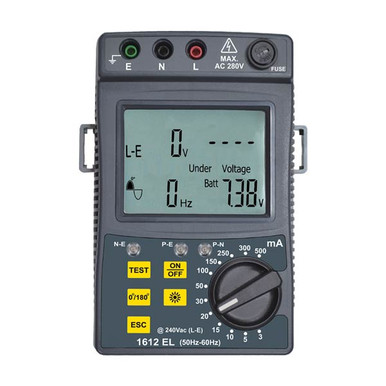If you are testing the distribution board with the full supply voltage, I suggest this circuit. It needs two isolation transformers, each rated to the voltage and current that you are trying to test with. There also needs to be a variac and a low voltage transformer. The variac doesn't need to be very powerful, it will only need to be rated to about 5% to 10% of the power that you are testing at. The low voltage transformer needs to have a secondary current rating that matches the power you are testing at.
The input and output of the distribution board are both fed from identical transformers, so there will be the same voltage and minimal current. The output of the low voltage transformer will add an unbalanced voltage, increasing the input voltage slightly. That will make current flow, and that can be measured and controlled with the variac.
I realise that the isolation transformers won't be cheap. You could have a single transformer with two secondaries, and the primary of that would not need to have a high rating. Given that transformers of that size are not mass-produced, a specially made transformer could be cheaper. I had a three-phase transformer made to a special design a few years ago, and I was surprised how cheap it was. The laminations, bobbins and wire were all stocked items at the manufacturers, so it was a custom assembly, rather than a completely custom design.
Alternatively, it may be possible to use a few of these:-
https://uk.rs-online.com/web/p/safety-site-transformers/9056248/ as the isolation transformers. I know that they are not 1:1 transformers, but two outputs in series would give you 220 V, and you would need a two for the input and two for the output. You would be spending about £1000 on the isolation transformers.
A cost-effective way to obtain the low voltage transformer would be to parallel the outputs of two of these:-
https://uk.rs-online.com/web/p/toroidal-transformers/6719167
This variac looks suitable:-
https://uk.rs-online.com/web/p/variacs/8902774
While this would be isolated from the mains, there are all sorts of ways that this could go very seriously wrong, but I can't see any way of testing a 32 A, 240 V distribution board at full voltage and current that wouldn't need any safety precautions.


